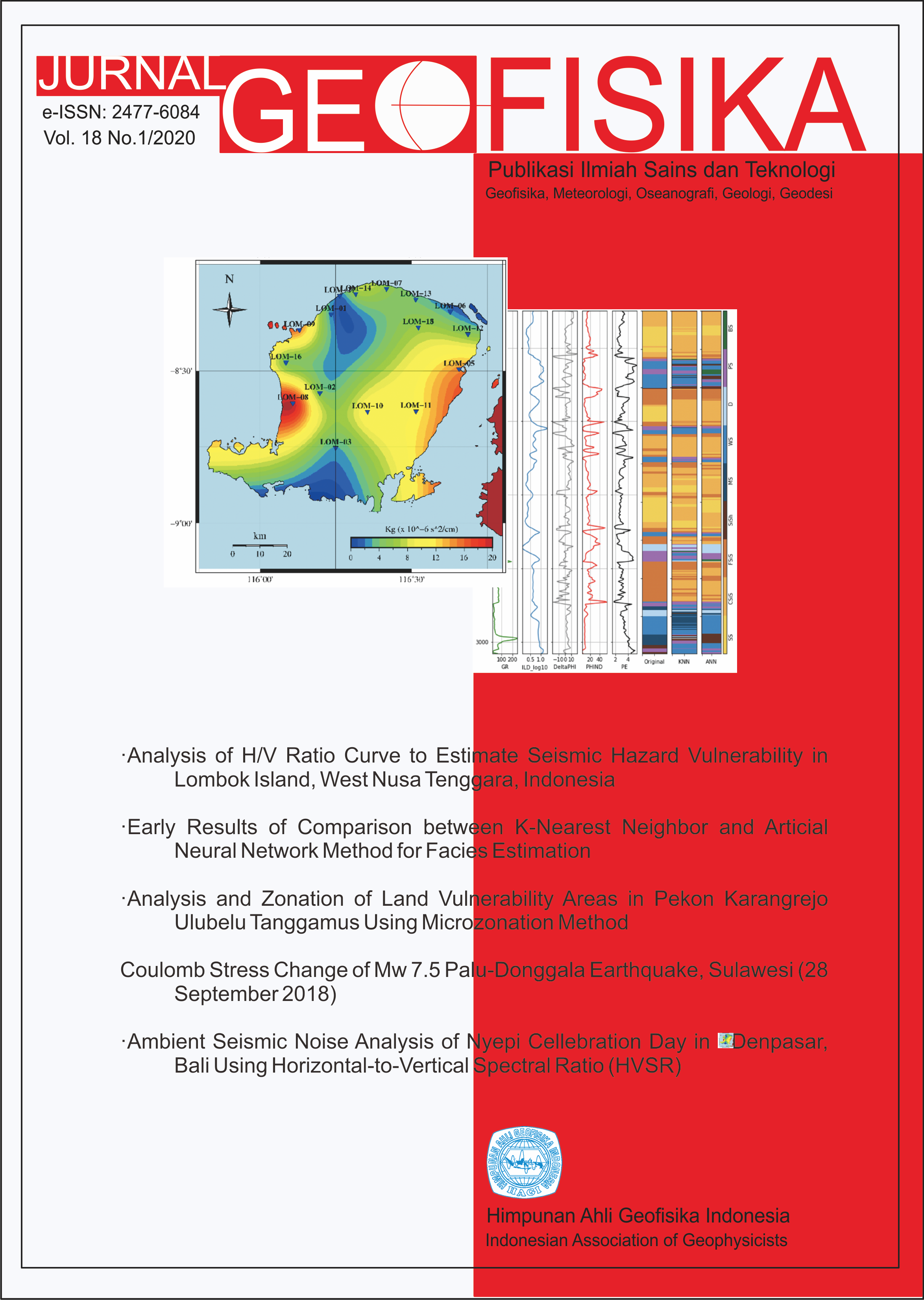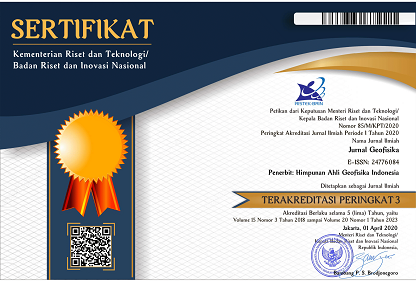Early Results of Comparison between K-Nearest Neighbor and Artificial Neural Network Method for Facies Estimation
Keywords
Artificial Intelligence, K-Nearest Neighbors, Artificial Neural Network, Facies EstimationAbstract
Artificial Intelligence method has been widely used recently in many aspects to understand big data. Fundamentally, the purpose of Artificial Intelligence is to solve nonlinear problem. Most methods are trying to optimize an output from one or many inputs parameter by identifying any potential patterns that fit or using a statistical data. In Oil & Gas industry, one of the main challenges that can be solved by Artificial Intelligence is estimating facies from well log or seismic data. The main scope of this study is estimating lithofacies by analyzing well logs input using two different methods, K-Nearest Neighbor (KNN) and Artificial Neural Network (ANN). We employed various well log data such as gamma-ray, resistivity, neutron density porosity, and photoelectric effect from well log data at Panoma Council Grove Field, South West Kansas, United States. This study shows that using optimized parameters, KNN method faster than ANN method but, ANN give result better than KNN. Nevertheless, despite the fact this research could estimate lithologies, many aspect should be considered in order to reach optimum result such as insights from geological regional models.
References
Bohling, G. C., & Dubois, M. K. (2003). An integrated application of neural network and Markov chain techniques to the prediction of lithofacies from well logs: Kansas Geological Survey Open-File Report 2003-50, 6 p. In Group.
Coomans, D., & Massart, D. L. (1982). Alternative k-nearest neighbour rules in supervised pattern recognition. Part 1. k-Nearest neighbour classification by using alternative voting rules. Analytica Chimica Acta. https://doi.org/10.1016/S0003-2670(01)95359-0
Freedman, D., Pisani, R., & Purves, R. (2007). Statistics Fourth Edition. In W.W. Norton & Company.
Freitas, C. O. A., De Carvalho, J. M., Oliveira, J. J., Aires, S. B. K., & Sabourin, R. (2007). Confusion matrix disagreement for multiple classifiers. Lecture Notes in Computer Science (Including Subseries Lecture Notes in Artificial Intelligence and Lecture Notes in Bioinformatics). https://doi.org/10.1007/978-3-540-76725-1_41
Hall, B. (2016). Facies classification using machine learning. Leading Edge. https://doi.org/10.1190/tle35100906.1
Koza, J. R., Bennett, F. H., Andre, D., & Keane, M. A. (1996). Automated Design of Both the Topology and Sizing of Analog Electrical Circuits Using Genetic Programming. In Artificial Intelligence in Design ’96. https://doi.org/10.1007/978-94-009-0279-4_9
Müller, A. C., & Guido, S. (2016). Introduction to Machine Learning with Python: a guide for data scientists. In Journal of Chemical Information and Modeling. https://doi.org/10.1017/CBO9781107415324.004
Pratama, H. (2019). Machine Learning: Using Optimized KNN (K-Nearest Neighbors) to Predict the Facies Classifications. https://doi.org/10.1190/segj2018-139.1
Waldeland, A. U., Jensen, A. C., Gelius, L.-J., & Solberg, A. H. S. (2018). Convolutional neural networks for automated seismic interpretation. The Leading Edge. https://doi.org/10.1190/tle37070529.1
Zhang, S., Cheng, D., Deng, Z., Zong, M., & Deng, X. (2018). A novel kNN algorithm with data-driven k parameter computation. Pattern Recognition Letters. https://doi.org/10.1016/j.patrec.2017.09.036

This work is licensed under a Creative Commons Attribution 4.0 International License.
The copyright of all articles belongs to the authors. All other copyrights is held by the Journal











